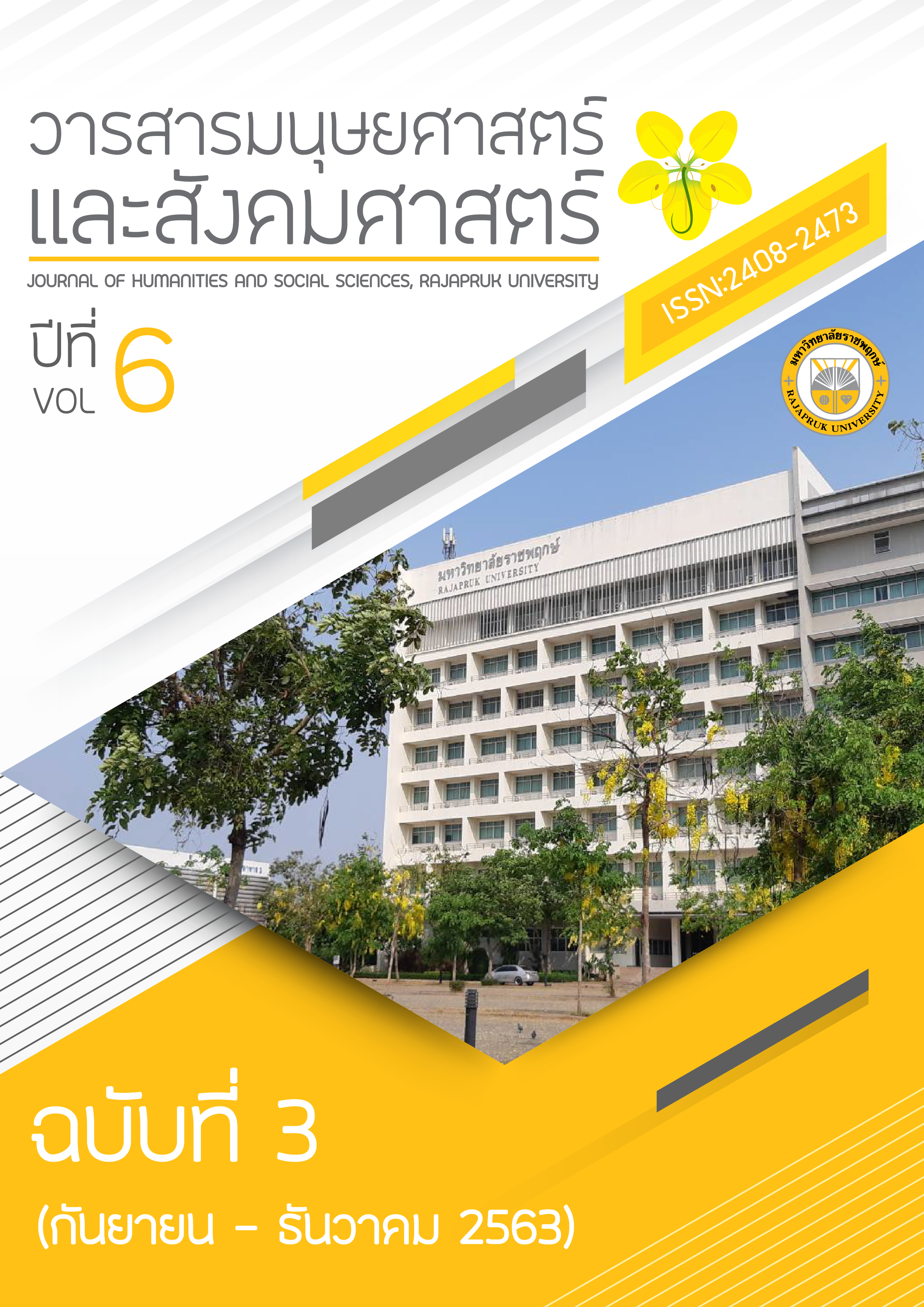Learning Organization Effects towards Organizational Innovativeness of Private University in Central Area
Main Article Content
Abstract
The purpose of this research study was to test learning organization influenced toward organizational innovativeness and performance of private university. The samples were lecturers and academic staffs of private university in the area of Bangkok Metropolitan, which contained 15 universities and 374 samples. The valid questionnaires were done and collected only 374, which was accounted for 98.94 percent. The instrument of this research was a questionnaire. Data was analyzed by using frequency, percentage, standard deviation, Partial Least Square.
The results of PLS found that learning organization had a positive effect on university performance at the level .05 of significant. Furthermore, learning organization had also a positive effect on organizational innovativeness at the level .05 of significant. Finally, organizational innovativeness had a positive effect on university performance at the level .05 of significant.
Article Details
References
ศิโรจน์ ผลพันธิน. (2549). รูปแบบการบริหารงานวิจัยของสถาบันอุดมศึกษา. กรุงเทพฯ: สำนักงานคณะกรรมการวิจัยแห่งชาติ.
สำนักงานคณะกรรมการการอุดมศึกษา. (2561). จำนวนมหาวิทยาลัยเอกชน. ค้นเมื่อวันที่ 5 ตุลาคม 2560, จาก http://www.mua.go.th/university-2.html
สำนักงานคณะกรรมการพัฒนาการเศรษฐกิจและสังคมแห่งชาติ. (2560). แผนพัฒนาเศรษฐกิจและสังคมแห่งชาติฉบับที่ 12 (พ.ศ. 2560-2564). กรุงเทพฯ: สำนักนายกรัฐมนตรี.
อัครนันท์ เตชไกรชนะ. (ม.ป.ป.). การพัฒนาหลักสูตรระดับอุดมศึกษาในประเทศไทย. ค้นเมื่อวันที่ 5 ตุลาคม 2560, จาก http://www.gotoknow.org/posts/285430.
Abubakar, A., Hilman, H., & Kaliappen, N. (2018). New Tools for Measuring Global Academic Performance. SAGE Open, 8(3) July-September 2018: 1–10.
Aron, A., & Aron, E. (1999). Statistics for psychology. 2nd ed. Upper Saddle River, NJ: Prentice Hall.
Chen, S.-C., Hsiao, H.-C., Chang, J.-C., Shen, C.-H., & Chou, C.-M. (2010). School Organizational Innovative Indicators for Technical Universities and Institutes. Contemporary Issues in Education Research (CIER), 3(7) July 2010: 43.
Drucker, Peter F. (2002). The Discipline of Innovation. Harvard Business Review. August: 95-103.
Hair, F. H., Hult, G.T.M., Ringle, C.M., & Sarstedt, M. (2014). A primer on partial least squares structural equation modeling (PLS-SEM). Thousand Oaks: Sage Publications.
Hussein, N., Omar, S., Noordin, F., & Ishak, N. A. (2016). Learning Organization Culture, Organizational Performance and Organizational Innovativeness in a Public Institution of Higher Education in Malaysia: A Preliminary Study. Procedia Economics and Finance, 37: 512–519.
Marquardt, M.J. (2002). “Building the Learning Organization”: Mastering the 5 Elements for Corporate Learning, translated by Mohammad Rezazali, Tehran University Press.
Marsick, V. J., & Watkins, K. E. (1999). Looking again at learning in the learning organization: A tool that can turn into a weapon! The Learning Organization, 6(5) December 1999: 207–211.
Mehrabi, J., Alemzadeh, M. & Jadidi, M. (2013). Explaining the Relationship between Organizational Structure and Dimensions of Learning Organizations (Case study: Education Organization in Boroojerd County and the Related Departments), International Journal of Academic Research in Business and Social Sciences, 3(4) April 2013: 116-128.
Merx-Chermin, Mireille & Nijhof, Wim J. (2005). Factor Influencing Knowledge Creation and Innovation in an Organization. Journal of European Industrial. 2 (29) February 2005: 135-147.
Moore, J. F. (2006). Business Ecosystems and the View from the Firm. The Antitrust Bulletin, 51(1) March 2206: 31–75.
Parker, John E. S. (1978). The Economics of Innovation: The National and Multinational Enterprise in Technological Change. New York: Longman.
Ufere, K.J., Uche, A.G., & Alias, B.B. (2016). Social determinants of voluntary carbon information disclosure in the real estate sector of Malaysia. Studia Ubb Negotia, LXI(3) December 2016: 69-83.
Yamane, Taro. (1973). Statistics: an introductory analysis. New York: Harper & Row.


